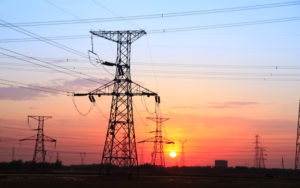
“Based on these results, we conclude that the current market design will support more than sufficient reserve margins from an economic perspective,” the report states.
The ERCOT energy market — like any wholesale energy market — needs a constant supply of reserve generating capacity to ensure it operates reliably. But how much reserve capacity? A system with too much may cost too much to operate. A system with too little runs the risk of blackouts.
 Now a new draft report from a national economics firm helps answer the question. Produced by the well-regarded Brattle Group (in conjunction with Astrapé Consulting), the report describes an economically optimal level of reserves for ERCOT and then concludes that the Texas market is set to slightly exceed that mark.
Now a new draft report from a national economics firm helps answer the question. Produced by the well-regarded Brattle Group (in conjunction with Astrapé Consulting), the report describes an economically optimal level of reserves for ERCOT and then concludes that the Texas market is set to slightly exceed that mark.
That is to say, when it comes to reserve power, the ERCOT market exists somewhere near the economic Goldilocks zone — not far-and-away too much, but neither too little.
“Based on these results, we conclude that the current market design will support more than sufficient reserve margins from an economic perspective,” the report states.
Questions surrounding ERCOT’s reserve margin play crucial roles in an ongoing, multi-billion-dollar policy debate over reliability and the cost of maintaining the state’s wholesale energy system. These questions also figure into decisions made by stakeholders at the Electric Reliability Council of Texas, which is the organization that oversees the state’s primary power grid.
Because Texas operates a competitive wholesale energy market, policymakers at ERCOT and the Public Utility Commission lack authority to address reserve-margin questions head-on by simply mandating new plant construction. Instead, they must set market rules that minimize barriers for generation investment — but always in such a way as to not undermine competition.
 NEW REPORT
NEW REPORT
Issued this week on behalf of ERCOT, the new draft report describes a hypothetical reserve margin for the ERCOT market under perfect economically efficient conditions. The Brattle experts then compared that hypothetical reserve margin with the reserve margin ERCOT realistically should support given actual conditions. The consultants conducted 57,000 computer simulations assuming different weather conditions and other variables for its analysis, which also assumed a 2022 test year.
What they determined was that as new generation comes online in response to actual market conditions that ERCOT will gravitate toward a reserve margin that slightly exceeds the hypothetical perfectly economic margin. This extra cushion should help ERCOT deal with unexpected events that could undermine reliability, such as extreme weather or sudden power plant failures.
The Brattle consultants note that it is by design that ERCOT supports reserve margins slightly higher than those considered perfectly economic. That’s because ERCOT and PUC policymakers have agreed to special rules (such as those for the Operational Reserve Demand Curve, explained here) that create additional monetary incentives for generation investment, but that also should slightly favor long-term system reliability.
UNDERSTANDING RESERVE MARGINS
An easy way to visualize the concept of reserve margins is to consider the minimum number of power plants needed to serve all citizens and businesses during the hottest day of the year. Then envision the additional plants capable of coming online and operating beyond that bare minimum. The reserve margin is a measurement of the output capacity of these additional plants or portions of plant capacity. As such, policy makers typically express reserve margins as numerical percentages. For instance, a reserve margin of 10 percent suggests the availability of 10 percent more power capacity beyond that which is needed to fulfill all consumer needs when their usage is highest.
Under projected market conditions for 2022, the Texas market should support a 10.25 percent reserve margin, according to the Brattle simulations. This is slightly higher than its estimate of an economically optimal reserve margin of 9 percent, according to the report.
You can read the full report here.
— R.A. Dyer

